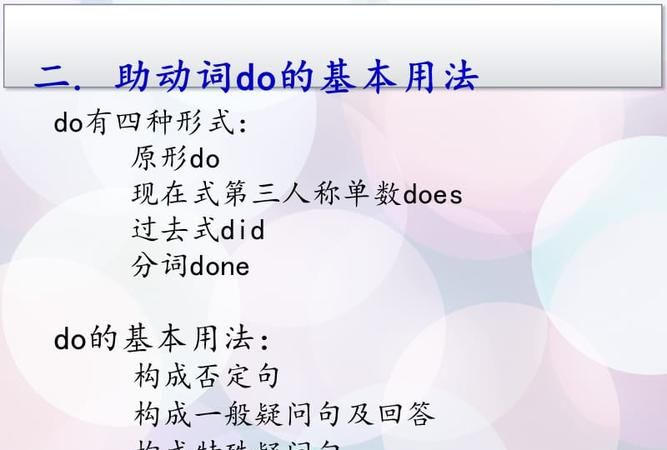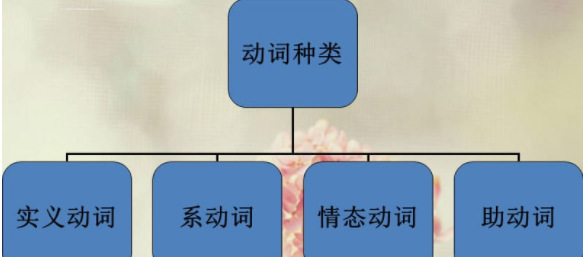本文目录
高中英语必修知识点总结笔记必修三北师大版
高中英语必修4必备知识点
1、place orders for sth. 订购 in order of age 按照年龄的顺序 in disorder = out of order 混乱
2、arrest sb. for sth. 因某事而逮捕某人 be under arrest 在逮捕中
3、free o
fcharge 免费 charge sb. for sth. 向某人索要某物 get sth. charged 给某物充电 take charge of = be in charge of 负责 take the charge of = be in the charge of 被负责
4、at a flick of a switch 轻按开关 switch on/off 打开/关闭 switch to 调到
5、not all most 几乎不 not nearly 远非
6、be busy doing = be occupied with sth./in doing sth. 忙于 on business 出差
7、throw/cast/shad light on 阐明观点
8、be/get stuck in = be trapped in 被困于,陷在 be stuck with 被……纠缠不清
stick to the plan 坚持计划 stick to doing = insist on doing = persist in doing
9、be marked with 标记 be caved with 雕刻
10、It’s worthwhile to do/of doing = be worth doing = be worthy of being done/of to be done 值得
11、limit to = restrict to 局限于
12、get around/round/about 到处走动;传播
13、at no time 决不 in no time 立刻
14、be on show/exhibition/display 在展览上
15、be crowded with 拥挤 the crowd 人群
16、the solution to ……的解决 the key to ……的关键 the answer to ……的答案 (to为介词)
17、stand in line = stand in a queue 站成一列
18、carry out 执行
19、keep cool = keep calm = calm down 镇定下来
20、greet sb. with sth. 用某物来问候某人
高中英语必修4知识要点
非谓语动词的主动形式表被动意义
在某些句型中可用动名词和不定式的主动形式表被动意义 。
1. 在need,want,require, hear等词的'后面,动名词用主动形式表示被动意义,其含义相当于动词不定式的被动形式。
例The house needs repairing(to be repaired).这房子需要修理。
2. 形容词worth后面跟动名词的主动形式表示被动含义,但不能跟动词不定式;而worthy后面跟动词不定式的被动形式。
例The picture-book is well worth reading.(=The picture-book is very worthy to be read.)
3. 动词不定式在名词后面作定语,不定式和名词之间有动宾关系时,又和句中另一名词或代词构成主谓关系, 不定式的主动形式表示被动含义。
例 I have a lot of things to do this afternoon.(to do与things是动宾关系,与I是主谓关系。)
试比较:I’ll go to the post office. Do you have a letter
to be posted? (此处用不定式的被动语态作定语表明you不是post动作的执行者。)
4. 在某些“形容词+不定式”做表语或宾语补足语的结构中,句子的主语或宾语又是动词不定式的逻辑宾语时,这时常用不定式的主动形式表达被动意义。这些形容词有nice,easy,fit,hard,difficult,important,impossible,pleasant,interesting等。
例This problem is difficult to work out .(可看作to work out省略了for me).
5. 在too… to…结构中,不定式前面可加逻辑主语,所以应用主动形式表示被动意义。
例This book is too expensive (for me)to buy.
6. 在there be…句型中,当动词不定式修饰名词作定语时,不定式用主动式作定语,重点在人,用被动形式作定语,重点在物。
例There is no time to lose(to be lost).(用 to lose可看成for us to lose;用to be lost,谁 lost time不明确。)
高中英语必修4语法知识
情态动词表推测的三种时态
1.对将来情况的推测,用“情态动词 + 动词原形”。
(1)She must / may / might / could arrive before 5. 5:00前她一定/可能/也许到。
2.对现在或一般情况的推测,用“情态动词 + be”,“情态动词 +be doing”或“情态动词 + 动词原形”。
(1)He must / may / might / could be listening to the radio now. 他一定/可能/也许正在听收音机。
注:情态动词 should /ought to表推测时,意为“想必会,理应……”但与“have +过去分词”连用时,则又可构成虚拟语气意为“本应该做某事却没做”。例如:
(4)It’s seven o’clock. Jack should/ought to be here at any moment. 现在七点钟了,杰克理应随时到达。(推测)
(5)She should / ought to have attended your birthday party, but she had to look after her mother in hospital. (虚拟) 她本该出席你的生日晚会的,可是她得在医院照顾她妈妈。
(6)Tom should not /ought not to have told me your secret, but he meant no harm. (虚拟) 汤姆本不该告诉我你的秘密,可是他并无恶意。
助动词(auxiliary)主要有两类:基本助动词(primary auxiliary)和情态助动词(modalauxiliary)。
基本助动词有三个:do, have和be;
情态助动词基本的有十四个:may, might; can, could; will, would; shall, should; must, need, dare, used to, ought to.had better 上述两类助动词的共同特征是,在协助主动词构成限定动词词组

什么时候用情态动词什么时候用be动词
情态动词+be和情态动词+be+动词ing是两种不同的用法。
情态动词+be 用法:当表示推测主语是什么或者主语所处的状态时就用情态动词加be动词。
情态动词+be+动词ing用法:表示“应当正在……”,“想必正在……”这类意思,用于推测或评论某动作是否正在进行。
实意动词占英语动词的绝大部分。 系动词,在句中作谓语动词,后面跟表语。

作用
助动词(auxiliary)主要有两类:基本助动词(primaryauxiliary)和情态助动词(modalauxiliary)。基本助动词有三个:do,have和be;情态助动词基本的有十四个:may,might;can,could;will,would;shall,should;must,need,dare,usedto,oughtto。hadbetter上述两类助动词的共同特征是,在协助主动词构成限定动词词组时,具有作用词的功能。
以上内容参考:百度百科-情态动词
what would you send to your sister as thr Christm
—What would you send to your sister as the Christmas gift?
—I haven't decided yet. I _____ send her a hand bag.
[ ]
A. shall
B. may
C. must
D. may be
选B
考点名称:情态动词
情态动词:
是一种本身有一定的词义,表示说话人的情绪、态度或与语气的动词,但不能单独作谓语,只能和其他动词原形构成谓语。
无人称和数的变化,情态动词后面跟的动词需用原形,否定式构成是在情态动词后面加 “not”。
个别情态动词有现在式和过去式两种形式,过去式用来表达更加客气,委婉的语气, 时态性不强,可用于过去,现在或将来。情态动词属非及物动词,故没有被动语态。
情态动词有四类:
①只做情态动词:must, can(could),may(might)……
②可做情态动词又可做实义动词:need, dare
③具有情态动词特征:have(had, has) to, used to
④情态动词表猜测
注:mustn't代表强烈禁止 must表示主观,have to表示客观。
常用的有:can may could must have use .
情态动词特点:
情态动词无人称和数的变化,情态动词后面跟的动词须用原形,否定式构成是在情态动词后面加 "not"。
个别情态动词有现在式和过去式两种形式,过去式用来表达更加客气,委婉的语气,时态性不强,可用于过去,现在或将来。情态动词属非及物动词,故没有被动语态。
He could be here soon.他很快就来。
We can't carry the heavy box.我们搬不动那箱子。
I'm sorry I can't help you.对不起,我帮不上你。
基本助动词与情态助动词最主要的区别之一是:
基本助动词本身没有词义,而情态助动词则有自己的词义,能表示说话人对有关动作或状态的看法,或表示主观设想:
What have you been doing since? (构成完成进行体,本身无词义)
I am afraid I must be going. (一定要)
You may have read some account of the matter. (或许已经)
除此之外,情态助动词还有如下词法和句法特征:
1) 除ought和used以外,其他情态动词后面只能接不带to的不定式。如果我们把ought to和used to看做是固定词组的话,那么,所有情态动词无一例外地只能接不带to的不定式:
We used to grow beautiful roses.我们过去常常种这种漂亮的玫瑰花
I asked if he would come and repair my television set.我问他是否来修我的电视机
2) 情态助动词在限定动词词组总是位居第一:
They need not have been punished so severely.
3) 情态助动词用于第三人称单数现在时的时候,没有词形变化,即其词尾无-s形式:
She dare not say what she thinks.
4) 情态动词没有非限定形式,即没有不定式和分词形式,也没有相应的动名词:
Still,she needn't have run away.
5)情态助动词的“时”的形式并不是时间区别的主要标志。在不少场合,情态助动词的现在时和过去时形式都可以表示现在、过去或将来时间:
Would you mind very much if I ask you to do something?
She told him he ought not to have done it.
6) 情态助动词之间是相互排斥的,即在一个限定动词词组中只能出现一个情态助动词,但有时却可以与have和be基本助动词连用:
You should have washed the wound.
Well,you shouldn't be reading a novel.
7)情态动词must一般疑问句否定回答用needn't
Must I read books every day、
No,you needn't
常见情态动词用法:
1.can (could) 表示说话人能,可以,同意,准许,以及客观条件许可,could 为 can 的过去式。
2.Must 必须,应该,一定,准是,表示说话人认为有必要做某事,命令,要求别人做某事以及对事物的推测。
must 用来指一般现在时和一般将来时, 过去式可用 have to 的过去式代替。
must + have + 过去分词,表示现在对过去事物的推测。
must 和 have to 的区别:must 表示说话人的主观思想,have to 表示客观需要。
3.need 是一个情态动词,他的用法完全和其他情态动词一样,但 need 还可当作实义动词使用,这时 need 就象其他动词一样,有第三人称,单复数, 后面加带 to 的动词等特性。
needn't + have + 过去分词 表示过去做了没必要做的事情。
4.dare 除用作情态动词外,更多的是当实义动词使用, 用法同实义动词一样,要考虑人称,单复数,时态等。
5.ought 应当,应该。后面跟带有 to 的动词不定式。
ought + to have done 句型。指过去动作,表示一件事情该做而未做。
ought not to have done 句型。表示一件不该做的事情却做了。
6.will (would)决心,愿望。 would 为 will 的过去式,
will, would用于疑问句表示说话人向对方提出请求或询问,用 would 比 will 更婉转,客气。
7.Shall、should 表示命令,警告,允诺,征求,劝告,建议,惊奇。
8.have to,不得不,必须,表示客观条件只能如此,而must 则表示主观思想。
情态动词功能:
助动词主要有两类:基本助动词和情态助动词。
基本助动词有三个:do,have和be;
情态助动词基本的有十四个:may, might; can, could; will, would; shall, should; must, need, dare, used to, ought to.had better 上述两类助动词的共同特征是,在协助主动词构成限定动词词组时,具有作用词的功能:
1) 构成否定式:
He didn't go and neither did she.
The meeting might not start until 5 o'clock.
2) 构成疑问式或附加疑问式:
Must you leave right now?
You have been learning French for 5 years, haven't you?
3) 构成修辞倒装:
Nowhere can he obtain any information about his sister.
Hardly had he arrived when she started complaining.
4) 代替限定动词词组:
A: Who can solve this crossword puzzle?
B: Tom can.
A: Shall I write to him?
B: Yes, do.
情态动词表推测的用法小结
(一)情态动词表推测的三种句式
1.在肯定句中一般用must (一定),may(可能),might /can, could(也许,或许)。
(1)He must/may/might know the answer to this question?
他一定/可能/也许知道这个问题的答案。
(2)It is cold in the room. They must have turned off the heating.
屋里很冷,他们肯定把暖气关了。
2. 否定句中用can’t / couldn’t(不可能), may not/might not (可能不)。
(1)It can’t/couldn’t be the headmaster. He has gone to America. 这不可能是校长,他去美国了。
(2)He may not/might not know the scientist. 他也许不认识那位科学家。
3. 疑问句中用can/could (能……?)。
(1)Could he have finished the task? 他可能把任务完成了吗?
(2)Can he be at home now? 他现在能在家吗?
注:以上三种句式中情态动词的语气按程度都是依次递减的。Might, could并非may, can的过去式,而表示语气较为委婉或可能性较小。
(二)情态动词表推测的三种时态
1. 对将来情况的推测,用“情态动词 + 动词原形”。
(1)She must / may / might / could arrive before 5. 5: 00 前她一定/可能/也许到。
(2)She must/may/might/could walk miles and miles among the hills without meeting anyone.
她一定/可能/也许会在山里一连走好几英里而遇不到一个人。
2. 对现在或一般情况的推测,用“情态动词 + be”,“情态动词 +be doing”或 “情态动词 + 动词原形”。
(1)He must / may / might / could be listening to the radio now. 他一定/可能/也许正在听收音机。
(2)He can’t ( couldn’t ) / may ( might ) not be at home at this time. 这个时候他不可能/可能不在家。
(3)Mr. Bush is on time for everything .How can ( could ) he be late for the opening ceremony ?
布什先生一向准时,这次开幕式他怎么可能迟到呢?
3.对过去情况的推测,用“情态动词 + have +过去分词”。
(1)It must / may / might / could have rained last night .The ground is wet. 地湿了,昨晚肯定/可能/也许下雨了。
(2)The door was locked. He can ( could ) not / may ( might ) not have been at home . 门锁着,他不可能/可能不在家。
(3)Can / Could he have gotten the book? 难道他找到书了吗?
注:情态动词 should /ought to表推测时,意为“想必会,理应……”但与“have +过去 分词”连用时,则又可构成虚拟语气意为“本应该做某事却没做”。
例如:
(4)It’s seven o’clock. Jack should/ought to be here at any moment.
现在七点钟了,杰克理应随时到达。(推测)
(5)She should / ought to have attended your birthday party, but she had to look after her mother in hospital. (虚拟)
她本该出席你的生日晚会的,可是她得在医院照顾她妈妈。
(6)Tom should not /ought not to have told me your secret, but he meant no harm. (虚拟)
汤姆本不该告诉我你的秘密,可是他并无恶意。

高中英语情态动词讲解
情态动词在句中放在谓语动词之前, 谓语动词前若有助动词,则在助动词之前,疑问句中, 情态动词则在主语之前。
I can see you. Come here.
我能看见你,过来吧。
He must have been away.
他一定走了。
What can I do for you?
我能帮你吗?
How dare you treat us like that!
你怎能那样对待我们!
第一题选 A
1、would rather 后加动词原形,不是不定式,排除C和D
2、首句用的是ended,过去式。would rather 表示一种意向,翻译为“宁愿”,既然事情已经过去了,就只能用完成式了,翻译为:我宁愿自己没有参加过那个party。 would rather 后边如果跟一般式,应翻译为“我宁愿不去参加”,一定是还没发生,此处不适合。
第二题选 C
1、D明显不对,连个动词没有(似乎是楼主打漏了吧,不过即使加上个go也不对)
2、B典型错误,比D还错。mustn't表示禁止。如:You mustn't smoke!
3、could/can的否定形式有两种可能:表示推测 和 翻译为“不能”。此处A没有什么特殊意义,把A填到空里应该翻译为“他不能去……”,人家为什么不能去啊?排除掉! C就是表推测了,have gone表示已经去了,而有了题目前一句,就不可能have gone,所以此处the speaker推断了一下。
其实我自身不太会讲,你可能也发现了,呵呵,我也只能讲到这种程度了。
另外,两个小题讲下来也挺费劲,如果能有幸被采纳的话,楼主能否追加点分?0分也太少了,呵呵
助动词(auxiliary)主要有两类:基本助动词(primary auxiliary)和情态助动词(modal auxiliary)。基本助动词有三个:do, have和be;情态助动词基本的有十四个:may, might; can, could; will, would; shall, should; must, need, dare, used to, ought to.had better 上述两类助动词的共同特征是,在协助主动词构成限定动词词组时,具有作用词的功能:
1) 构成否定式:
He didn't go and neither did she.
The meeting might not start until 5 o'clock.
2) 构成疑问式或附加疑问式:
Must you leave right now?
You have been learning French for 5 years, haven't you?
3) 构成修辞倒装:
Nowhere can he obtain any information about his sister.
Hardly had he arrived when she started complaining.
4) 代替限定动词词组:
A: Who can solve this crossword puzzle?
B: Tom can.
A: Shall I write to him?
B: Yes, do.
can和could的用法
1. 表示能力或客观可能性,还可以表示请求和允许。如:
Can you finish this work tonight?
Man can not live without air.
— Can I go now? — Yes, you can.
注意:①could也可表示请求,语气委婉,主要用于疑问句,不可用于肯定句,答语应用can(即could不能用于现在时态的简略答语中)。如:
Could I come to see you tomorrow?
Yes, you can. (否定答语可用No, I'm afraid not.)
②can表示能力时,还可用be able to代替。如:
I'll not be able to come this afternoon.
2. 表示惊异、怀疑、不相信的态度。(主要用在否定句、疑问句或惊叹句中)
Can this be true?
How can you be so careless!
This can not be done by him.
3. “can(could) + have + 过去分词”的疑问或否定形式表示对过去发生的行为怀疑或不肯定。如:
He can not have been to that town.
Can he have got the book?
4. 用在疑问句及否定句中,表示惊讶,不相信等.
5. can not```too\enough表示"无论怎样``````也不过分","越``````越好"

以上就是关于十四个助动词 ,高中英语必修知识点总结笔记必修三北师大版的全部内容,以及十四个助动词 的相关内容,希望能够帮到您。
